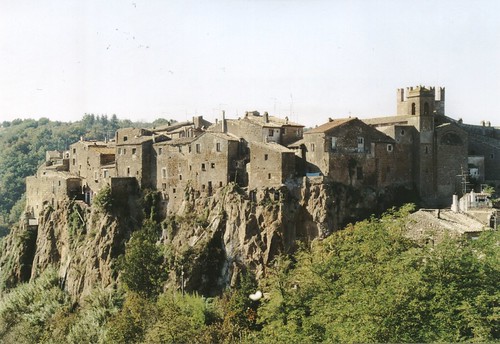...is apparently having a bit of a tourist revival. The town has suffered the classic Italian fate of rural depopulation (and I hear that the current round of cuts will remove mayors and local government from many historic towns - a fate that has also befallen many many English towns over the years, including both rural -Totnes- and urban -Stourbridge- but I digress). Now, however, it has been placed on the World Monuments Fund's 2006 Watch List of the 100 Most Endangered Sites, due to the threats it faces from erosion and unregulated tourism. The erosion is due to "arroyo" "badlands"-type arrid storm rainfall and will be made worse by global warming. This process started with too-intense farming during the Roman Empire and could be alleviated by planting trees. As for tourism. There you go, on the brink of terminal decline and you finally get a fillip of tourism only to risk killing the goose that lays golden eggs. It is indeed a tightrope you walk when the fact that a town crystallised long ago, through economic and population decline, is the thing that makes tourists want to visit, and which supplies a modicum of money and life for an otherwise moribund settlement.
Calcata had a more dramatic transition Wikipedia says, "In the 1930s, the hill towns's fortified historic center was condemned by the government for fear that the volcanic cliffs the ancient community was built upon would collapse. Local residents moved to nearby Calcata Nuova. In the 1960s, the emptied historical centre began to be repopulated by artists and hippies who squatted in its medieval stone and masonry structures. Many of the squatters eventually purchased their homes, the government reversed its condemnation order, and the residents of what had become an artistic community began restoring the ancient town.Click here for more views
This trend has continued. Today the town has a thriving artistic community described in the New York Times as what "may be the grooviest village in Italy, home to a wacky community of about 100 artists, bohemians, aging hippies and New Age types."
View Larger Map





















No comments:
Post a Comment